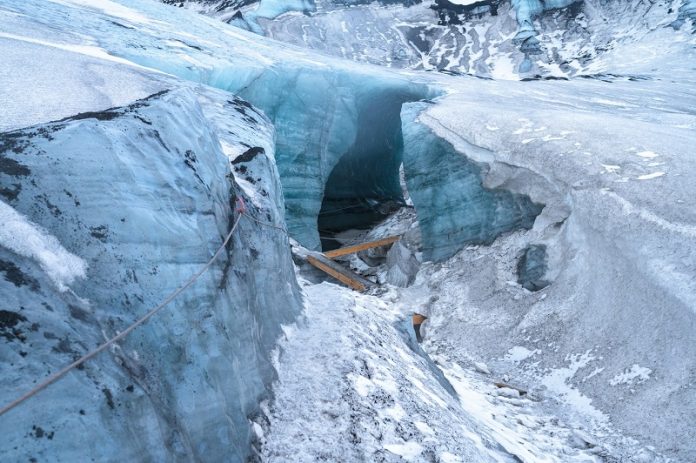
Melting glaciers could lead to more explosive and frequent volcanic eruptions, according to a new study that looked at volcanoes in the Chilean Andes.
As climate change causes glaciers to shrink, scientists warn that long-dormant volcanoes—especially those hidden under ice—might become active again.
The research, led by scientists from the University of Wisconsin–Madison, will be presented at the Goldschmidt Conference in Prague.
It focuses on six volcanoes in southern Chile, including the now-silent Mocho-Choshuenco volcano.
The team wanted to understand how the advance and retreat of the massive Patagonian Ice Sheet influenced volcanic activity over thousands of years. They worked with other experts from Lehigh University, UCLA, and Dickinson College.
To investigate, the researchers used special dating techniques and crystal analysis from volcanic rocks.
They found that during the last ice age, about 26,000 to 18,000 years ago, thick glacial ice pushed down on the Earth’s crust, which actually reduced the number and size of volcanic eruptions.
However, this pressure allowed large amounts of gas-rich, sticky magma to collect deep underground—up to 15 kilometers below the surface.
When the ice sheet began to melt rapidly at the end of the ice age, the sudden loss of pressure allowed the Earth’s crust to relax and gases in the magma to expand.
This pressure buildup caused powerful volcanic eruptions, forming new volcanic structures.
Lead researcher Pablo Moreno-Yaeger explained that glaciers act like a lid on a pot of boiling water. When the lid (the glacier) is removed, the pressure is released, and eruptions are more likely to happen—and to be more explosive.
This pattern has already been observed in Iceland for decades, but the new study shows that the same thing could happen in other glaciated areas such as Antarctica, North America, New Zealand, and parts of Russia.
Although the actual eruptions can seem sudden, the changes in the underground magma system take centuries to develop. This means scientists have time to monitor these volcanoes and issue warnings if needed.
The study also highlights another concern: the impact of eruptions on the global climate. While a single large eruption can temporarily cool the planet—like the 1991 Mount Pinatubo eruption that dropped global temperatures by about 0.5°C—multiple eruptions over time can add more greenhouse gases to the atmosphere.
This could worsen climate change in the long run, creating a dangerous cycle: melting glaciers lead to more eruptions, and those eruptions may cause even more warming and melting.



